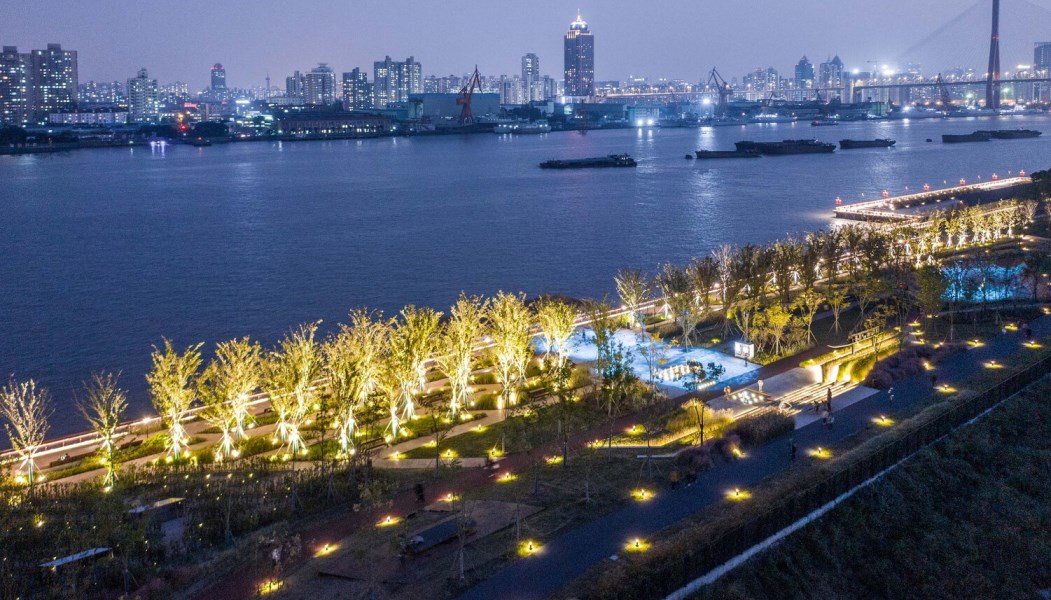In Shanghai, China, a massive post-industrial waterfront was badly redeveloped two decades ago, destroying virtually all of its heritage.
Now, a second, greener attempt to revitalize the area, designed by the landscape architects at Da landscape, promises to be far more successful.
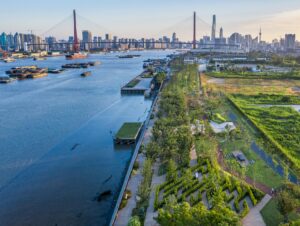 The Shanghai 12th Cotton Mill in the southern section of Yangpu Riverfront is the first plot to be developed in the 5.5km shoreline, which completed its transformation from industrial to commercial use 20 years ago.
The Shanghai 12th Cotton Mill in the southern section of Yangpu Riverfront is the first plot to be developed in the 5.5km shoreline, which completed its transformation from industrial to commercial use 20 years ago.
Unfortunately, the earlier redevelopment strategy did not preserve any historic relics, leaving a wasteland.
In the context of the connection of the Huangpu River waterfront public space, the design team focused on addressing the dual challenges updating the flood control system and the echoing historical memory.
The site was originally the Dakang Yarn Mill (1912) founded by Japanese companies, and then transformed into the state-owned Shanghai 12th Cotton Mill.
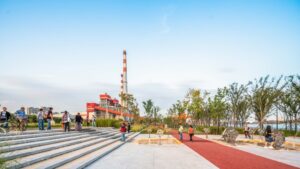 Historically, factories turned plants (cotton) into textiles that people can use.
Historically, factories turned plants (cotton) into textiles that people can use.
Now the factory has been turned back into a green plant space that people can use, continuing the connection between this site and people’s lives.
The site is characterized by two textures:the diagonal line representing the original factory and the horizontal line representing the walk flow along the river.
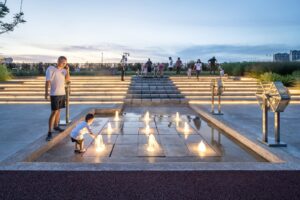 The design plan combines the two textures with the concept of “weaving”, combined with the newly constructed flood control system to replace more green spaces, forming a continuous riverside tree-lined pedestrian network.
The design plan combines the two textures with the concept of “weaving”, combined with the newly constructed flood control system to replace more green spaces, forming a continuous riverside tree-lined pedestrian network.
As the only shoreline in the southern section of the Yangpu Riverside without high-piled wharves, good soil planting conditions of the site have brought plenty of greenery and natural features.
The playground and recreational facilities set in the greenery create a diverse riverside experience.
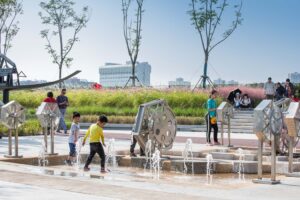 Khaki water-permeable paving materials are used on the ground, and the color and texture are very close to the real soil, providing a comfortable walking experience and feeling.
Khaki water-permeable paving materials are used on the ground, and the color and texture are very close to the real soil, providing a comfortable walking experience and feeling.
It also responded to the glorious history of the 12th Cotton Mill , which produced industry-leading high-quality khakis and was known as the “Khaki King”.
The unpowered amusement equipment space set in combination with the slow-moving system continues the weaving theme, which is suitable for children of different ages.
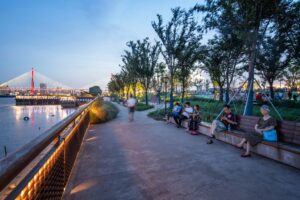 Combining with the topography of the flood control system to form a highly engaging and interesting activity experience.
Combining with the topography of the flood control system to form a highly engaging and interesting activity experience.
The Shaquan Square in the middle part uses the height difference to form stone steps and pools that fall down layer by layer, forming a waterscape axis connecting the riverside and the future development land.
The simulated yarn spinning machine by the pool can control the height of the fountain.
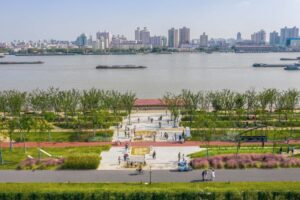 The waterwheel amusement device is designed with textile machine parts as the prototype in the pool, which attracts the public’s interactive participation in an interesting way.
The waterwheel amusement device is designed with textile machine parts as the prototype in the pool, which attracts the public’s interactive participation in an interesting way.
Before the renovation, Twelve Cotton’s riverside space basically had no historical relics.
Therefore, the focus of the public space is more on human experience and activities, and echoes historical clues.
In the old factory site closest to the Huangpu River, a green, fun and playable space is created, giving the industrial rust belt a relaxed and soft color.
Photographs are by Xiaohui Jin and Chill Shine.

